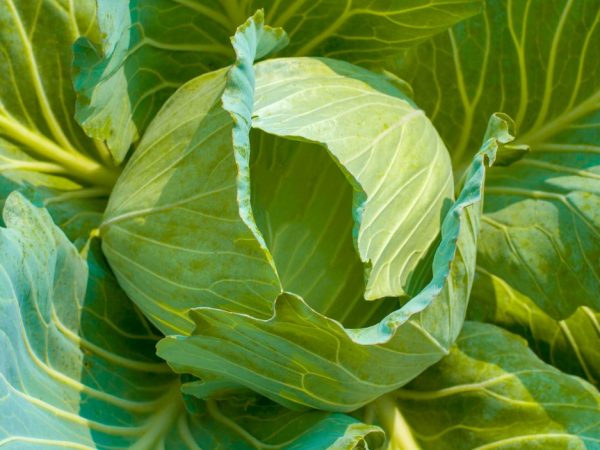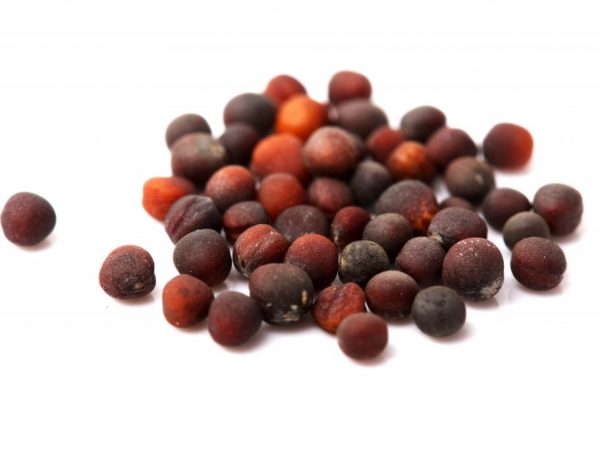Description of Cabbage Transfer
Cabbage Transfer f1 is a hybrid variety developed by a Dutch company and adapted to different climatic conditions. It is almost completely devoid of flaws.

Description of Cabbage Transfer
Variety characteristic
Cabbage Transfer f1 is an early maturing hybrid. It is suitable for commercial production and short-term storage. It is grown both in seedling and non-seedling methods, but for f1 cabbage, planting seedlings makes it possible to obtain early production. The culture is eaten both raw and cooked.
Description of the head
The value of cabbage lies in a large set of vitamins and minerals important for the human body.
Description of the head of cabbage variety Transfer:
- round shape;
- average density;
- the presence of voids around the periphery;
- short stump;
- the socket is compact and semi-raised;
- weight - from 0.7 to 1.5 kg.
Description of the head of cabbage leaves:
- rounded;
- light green with small bubbles;
- a protective waxy coating forms on the surface of the leaves;
- the edge of the leaf is slightly wavy;
- the outer color of the head is greenish-white.
Seedling method of growing
For sowing seeds by seedling method, cassettes with 56 cells are used. The soil is highly fertile, with an organic matter content of at least 10%. The nutrient substrate is thoroughly moistened and depressions are made in it by 1 cm. Seeds are placed one by one in these holes and sprinkled with dry soil mixture 0.5-1 cm thick on top.
Provide good lighting after germination. The temperature drops to 6-8 ° C for 4-5 days. This technique is indispensable to prevent pulling or death of seedlings. After the appearance of the first true leaf, the air temperature rises to 14-18 ° C.
Seedlings are watered with water heated to 20 ° C. Do not allow the soil to dry out. Before planting in the ground, the seedlings should have 4-6 well-developed sheets of light green color with a weak waxy bloom.
Seedless growing method

Seeds must be prepared for planting.
Seeds with a seedless planting method are carefully prepared.
Description of required activities:
- soak the selected seeds for 10-15 minutes in ice water;
- place them in a nutrient solution with trace elements for 12 hours;
- rinse with clean running water;
- wipe dry;
- refrigerate for 24 hours.
The soil should be fertile, with a high moisture capacity, well cultivated. Sowing begins at a soil temperature of 8-10 ° C. Seeds are sown to a depth of 2-3 cm.
After the emergence of seedlings, the soil between the rows is loosened. After the appearance of 3-4 leaves, thinning is performed. A distance of up to 35-50 cm is observed between plants.
Care
Further care for cabbage consists in regular watering, applying various fertilizers, and controlling weeds and pests.
It is not difficult to follow the rules, but non-compliance with at least one of these rules and violation of the terms of their implementation leads to a significant decrease or complete loss of the crop.
Watering
Hybrid Transfer f1 is a moisture-loving vegetable crop. Optimal soil moisture conditions are not less than 75% in the area of the cabbage root system. Watering is carried out, depending on weather conditions.
The fruit can crack due to excessive watering or sudden fluctuations in soil moisture.
Weed control
Plant protection from weeds includes a complex of agrotechnical and chemical measures carried out at different periods of crop growth.
Agrotechnical measures:
- crop rotation;
- pre-sowing treatment;
- inter-row processing;
- hand weeding.
Chemical methods of protection:
- application of continuous herbicides;
- application of selective herbicides.
Continuous herbicides are used before planting seedlings in the soil or with a non-seedling method before seed emergence. These drugs include Roundup, Tornado, Glyphos, etc.
Selective herbicides are applied after germination. These include the following drugs: Treflan, Lontrel, Panther, Targasuper, Fuzilad Forte, etc.
Pest control
To obtain a high-quality harvest, they periodically fight pests.
Preventive measures:
- timely destruction of weeds and post-harvest residues,
- loosening row spacings during pupation of caterpillars,
- culling of damaged seedlings,
- seed treatment with insecticides.
In the fight against pests, insecticides of contact-systemic action ("Confidor", "Zolon", "Aktara", "Bi-58") are used by spraying. They are used for mass distribution of pests strictly in accordance with the manufacturer's instructions.
Fertilization
Top dressing is performed after 10-14 days after transplanting. With the seedless planting method, fertilizers are applied fractionally, depending on the condition of the plant.
Mullein at a dosage of 1:10 or chicken manure at a dosage of 1:12 is suitable for these purposes. After 10 days, feeding is repeated. After watering, the procedure is more effective. You can sprinkle the soil with wood ash: it perfectly nourishes and protects against pests.
Diseases and the fight against them
This hybrid is resistant to vascular bacteriosis and blackleg, but is susceptible to a number of other diseases typical of the cruciferous family.
It is always easier to prevent a disease than to cure it. For prevention use the following fungicides: "Fundazol", "Previkur", copper sulfate, "Ridomil Gold", copper oxychloride.
Conclusion
Early ripening, good germination, amicable ripening and excellent taste make the Transfer variety very popular among gardeners. This is one of the best hybrids among the early cabbage species.


